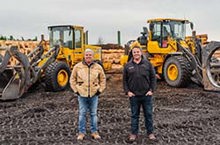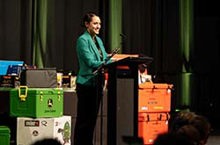
In its first year, iwi-led environmental charity, Te Tapu o Tāne owned by Ki Papatipu Rūnanga o Murihiku, has grown, sold and planted more than 150,000 plants and is moving on to some of the biggest restoration projects in the region. Its mahi involves regenerating and reinstating wetlands, riparian margins, and bringing back native forestry cover. Its area of interest is throughout the Murihiku takiwā which stretches ki uta ki tai (from the mountains to the sea).
Te Tapu o Tāne commercially provides catchment rehabilitation services from a te ao Māori perspective, environmental project management, native trees and plants, reforestation and site maintenance. They are working under the Murihiku Rūnanga and alongside Ngāi Tahu, local government, central government, and private partners.
The charity is celebrating a year of exceeding targets and expectations with an open day and naming of the southern nursery operation “Te Kōhaka o Tāne” (The Nest of Tānemahuta).
Te Tapu o Tāne is a social enterprise and through its work, is providing career pathways for rangatahi in Murihiku (Southland) in the environmental space.
Pou Tūraka/Chief Executive Officer, Jana Davis, says he is excited at the renewed energy and focus on restoration mahi. They are now gearing up for two of the biggest restoration projects in the region – planting 15,000 native trees and taonga species in Cromwell on Lake Dunstan, and 15,500 natives on the front face of Paharaaki/Coronet Peak, one of the most recognised mountains in the country. This is Phase 1 of a much larger initiative at Coronet Peak with a total target of planting 300,000 natives in the coming years and 30,000 more natives along the Cromwell section of the Matau-Au Clutha River system. These projects are returning the whenua to its original state and increase the mana and mauri of iconic mauka (mountains) and awa (rivers).
He says this is an opportunity for mana whenua to show what a template for restoration can look like.
“We chose Central Lakes due to its high foot traffic. People will see the change as they drive past the mauka.
“This project is a way to combat climate change at scale. Our work will be a prototype for showcasing to the rest of the world how a small country like Aotearoa can make an impact. Successful restoration is about creating a relationship between community and te Taiao (natural environment).”
Te Tapu o Tāne already has a nursery in Queenstown employing 15 kaimahi (employees), with the opening of a second nursery that number will double.
“It hasn’t been hard to find the right people who care about the kaupapa, it is a young energetic hapū and we are all in it together,” Mr Davis says.
“We have made strong relationships with the local businesses and the community and of course there are the existing relationships that sit at that mana to mana level between Mana Whenua and Crown Agencies. Combating climate change requires all stakeholders working together. We are here to play our part, boots on the ground mahi, to help push towards the vision of the rūnanga for climate resilience and connection to land and water.”
Kaiwhakahaere Mahi Chief Operating Officer, Ashleigh Taomia says rangatahi Māori (young people) are benefitting from the jobs generated. They are learning on-the-job and acquiring skills from tree planting to project management and horticulture, to freshwater monitoring and GIS mapping,
“It’s such a pleasure watching our rangatahi progressing with capability and training, receiving accreditation, and realising they can undertake extra study while also earning a living. Most of them already see this as their long-term career,” she says.









